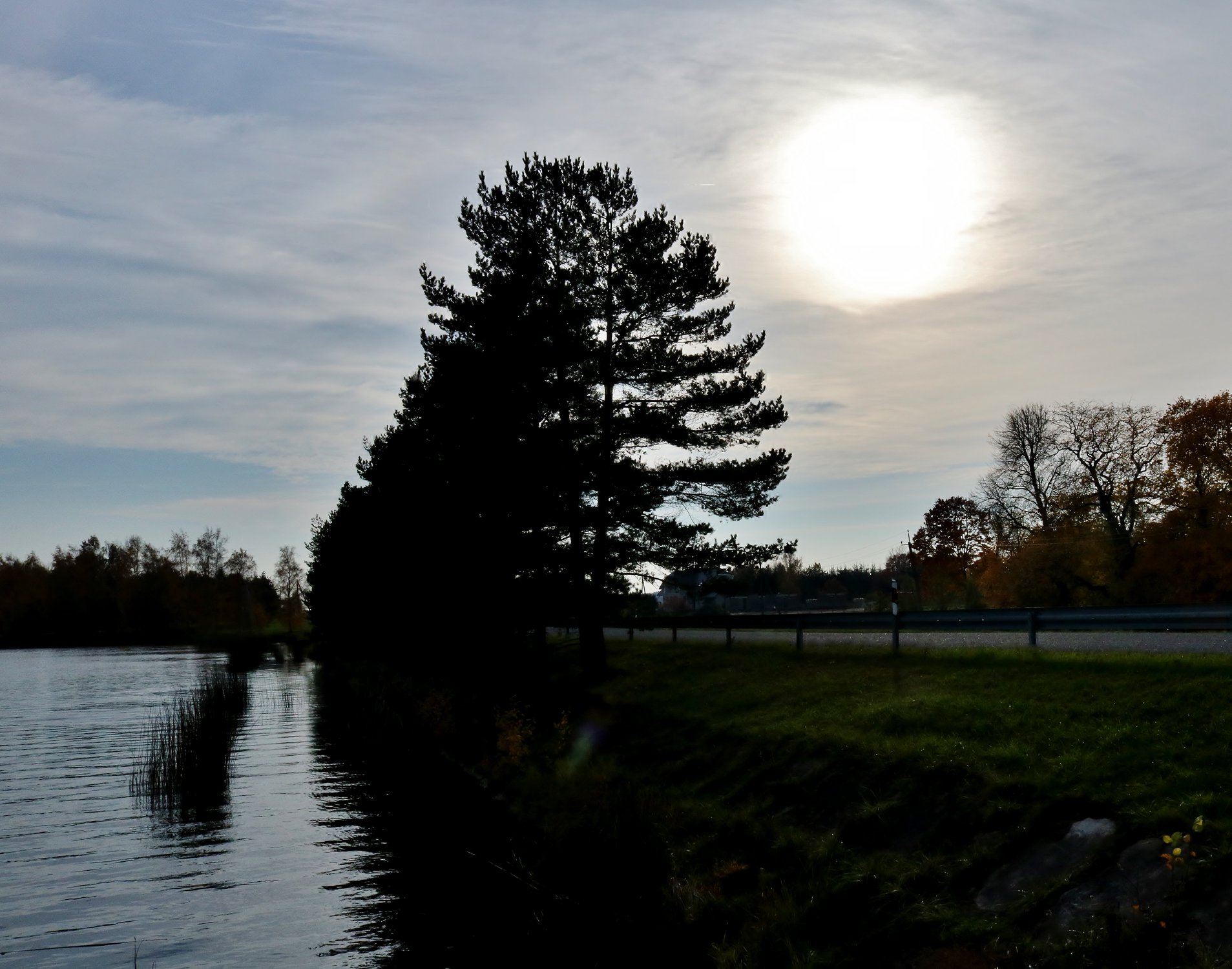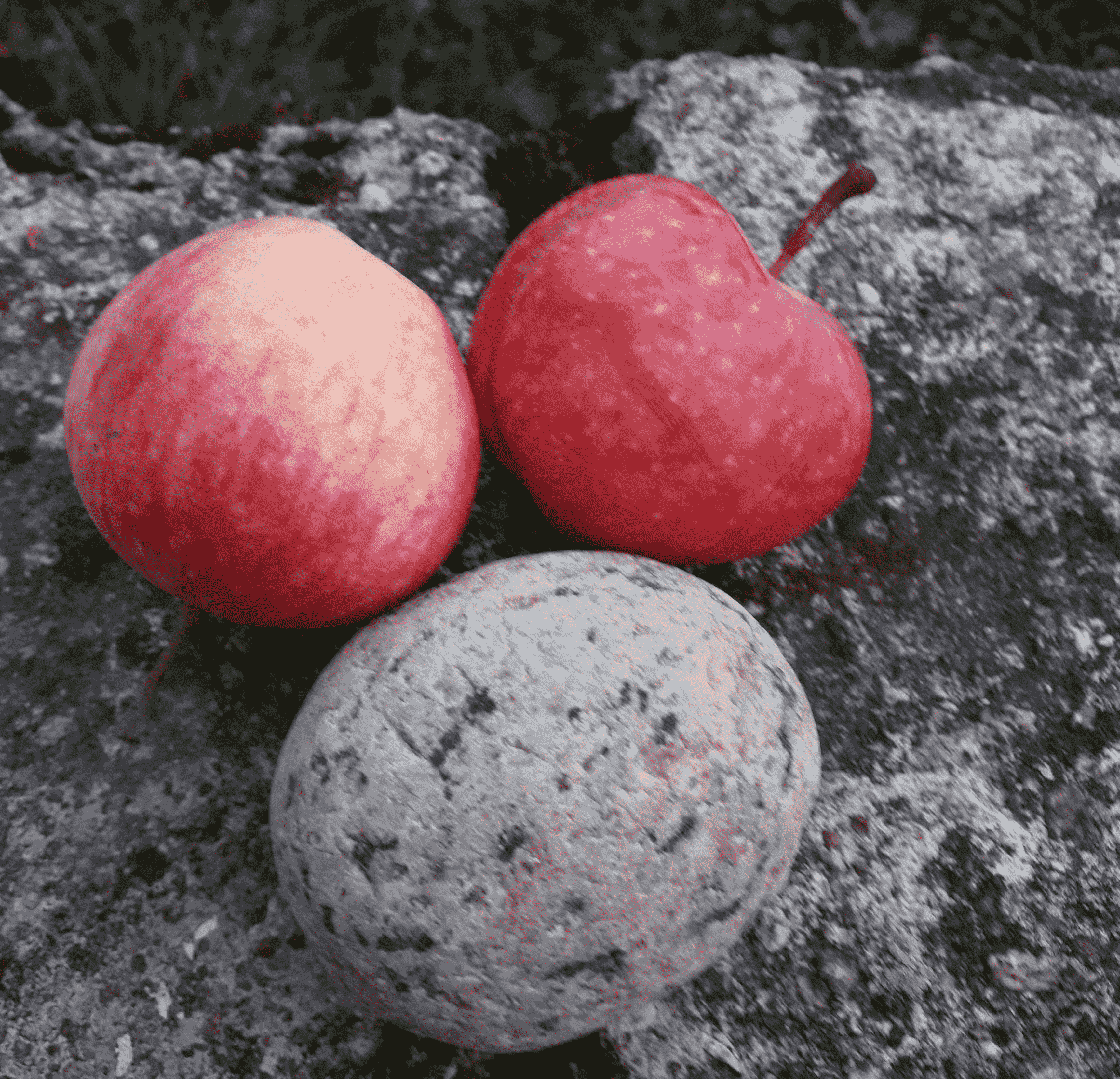Creation of the world
The girls, let go raking the sea! From the sweepings, thrown into the water, a blue-spotted wonderbird with grey teeth was born.
It flew to the land, to our yard, and preferring the golden bush to the red and blue one, it made her nest there.

When the offspring was out,
she started to throw them.
One became a juniper on the hill,
the second a stone on the field,
the third star in the sky,
the fourth the Moon in the sky,
the fifth the Sun shining.
How to foment kali 1
if there were no junipers on the hill.
How to boil the wort
if there were no stones.
How to keep time in the nighttime,
how to walk the road
if there were no Moon or stars.
How to dry hay
if there were no Sun shining?
1 A light nonalcoholic beverage, made of slightly fermented bread; it is known in other nations with names kvass, and gira.
Nimekirja neiud noored,
nüid lääme merda pühkima,
mere ääri äigama!
Pühime pühked meresse,
äigame laastud lainetesse!
Mis sääl pühkemes pööriteleb,
mere keskel keeriteleb?
Sinisekirju linnukene,
allikirju hambad suus.
Lindis üle meie oue,
lindis meie alla kopli.
Mis säält koplist tousinessa?
Kolmi põesast tousinessa.
Üks oli sinine põesas,
teine oli punane põesas,
kolmas kullakarvaline.
Hakkas ta sinist salgama,
hakkas ta punast põlgama;
hakkas kulda armastama -
pesa tegi kulla keske'elle.
Hakkas ta mune munema:
munes kuu, munes kaksi,
Paari pääva peale kuu.
Siis hakkas poegi hauduma:
haus ta kuu ja haus ta kaksi,
paari päeva peale kuu.
Siis hakkas poegi pillutama:
ühe viskas kadakast mäele,
teise kivist põllu peale,
kolmanda tähes taevuessa,
neljanda kuus taevuessa,
viienda päeva paistemassa.
Kudas seda kailla hautanessa,
kui põle kadakast mäele.
Kudas seda virret keedetakse,
kui põle kivi põllu peale.
Kudas seda ööda arvatakse,
kui põle tähti taevuessa.
Kudas seda teeda käidanessa,
kui põle kuuda taevuessa.
Kudas seda heina kuivatasse,
kui põle päeva paistemasse?

A silky feathered lovely bird,
a silky feathered lovely bird.
Refr: Vaat luuli, vat-vat luuli,
a silky feathered lovely bird.1
Flew onto a golden bush,
flew onto the golden bush.
The gold did not choose to love,
the gold did not choose to brook.
A silky feathered lovely bird,
a silky feathered lovely bird.
Flew onto the silver bush,
flew onto the silver bush.
The silver did not choose to love,
the silver did not choose to brook.
A silky feathered lovely bird.
flew to the silky bush.
The silk chose to love it,
the silk chose to brook it.
A silky feathered lovely bird
started building a nest.
It collected little straws
and settled the little feathers in.
It laid three eggs in,
and hatched three baby birds.
One was a nice fallow bird,
the other a lazy woodland bird.
The third was a silk-feathered bird,
the third was a silk-feathered bird,
Herbert Tampere: What song is it, was it just sung for fun?
Liisa Arus: Yes, it was just sung to children.
HT: A circle dance probably?
LA: Yes, the circle dance was done. Very beautiful.
HT: OK.
LA: Little children played a circle dance. They still made a circle, holding hands. Now it is no longer a circle dance. Relics of old age, the time has passed.
HT: But was there dancing inside or not?
LA: Well, the children danced inside too. While – 'vat luuli' was sung... Well, this fallow bird was a lark, it lives and makes a nest on the field. A lazy woodland bird is a cuckoo who doesn't make a nest, and the third silk-feathered bird, I don't know it.
1 The refrain 'vaat-luuli' and repetition of the second verse line are persistently added to verses throughout the song.
Siidisulist linnukene,
siidisulist linnukene.
Refr: Vaat luuli, vat-vat luuli,
siidisulist linnukene.1
Lendas kullast põõsa pääle,
lendas kullast põõsa pääle.
Kuld ei võtnud armastada,
kuld ei võtnud kannatada.
Siidisulist linnukene,
siidisulist linnukene.
Lendas hõbe põesa pääle,
lendas hõbe põesa pääle.
Hõbe ei võtnud armastada,
hõbe ei võtnud kannatada.
Siidisulist linnukene,
lendas siidi põõsa pääle.
Siid teda võttis armastada,
siid teda võttis kannatada.
Siidisulist linnukene,
hakkas pesa ehitama.
Korjas kokku kõrrekesi,
säädis sisse sulekesi.
Munes sisse kolmi muna,
haudus välja kolmi poega.
Üks oli kena kesalindu,
teine laiska laanelindu.
Kolmas oli siidisulist lind,
kolmas oli siidisulist lind.
Herbert Tampere: Mis laul nüüd see on, niisama lauldi või?
Liisa Arus: Niisama lauldi lastele ikki ja.
HT: Ringmängu või?
LA: Jah, ringmängu jah, lasti. Hästi ilus.
HT: Ah soo.
LA: Väiksed, lapsed tegid ringmängu ja. Ikka võtsid ringi, käest kinni. Nüüd seda änam ei tehta ringmängu. Vanaks jäänd, aeg mööda.
HT: Aga kas seal sees tantsiti ka või ei tantsitud?
LA: Noh lapsed jah ikka tantsisid sees ka jälle ja. Sel ajal kui – "vat luulit" lauleti... Noh sii kesalind oli lõoke, kesapeal elab ja pesa teeb. Laisk laanelind on kägu, kes pesa ei tee ja kolmas siidisulist linnukene, seda ei tea.
1 Igale värsipaarile lisatakse sarnasel kombel refrään, mis koosneb "vaat-luuli" reast ja teise värsirea kordusest.
In whose yard is there an apple tree?
In our yard there is an apple tree.
How many branches on the apple tree?
Three there were branches on the apple tree.
How many blossoms on the branches?
Three there were blossoms on each branch.
How many apples for each blossom?
One there was an apple for each blossom.
When the apples were ripe,
along came a wind and raised a storm,
it shook the apples into the sea.
From the sea arose a many-coloured bird,
it flew through our yard,
and down into our copse.
Three there are bushes in our copse:
one bush was a silver bush,
another bush was a copper bush,
the third was golden filigreed.
The bird started to build a nest,
to collect bits of wood.
When it got the nest ready,
it started to lay eggs;
when the eggs were laid,
it started to hatch them out;
when they were hatched,
it started to raise them,
raise them and prise them;
when the chicks were grown,
it started to drop them.
It placed one as the sun over the world,
another as the moon in the heavens,
the third as a stone in the field.
Kelle õuese õunapuu?
Meie õuese õunapuu.
Metu oksa õunapuul?
Kolm olid oksa õunapuul.
Metu õita oksale?
Kolm olid õita oksale.
Metu õuna õiele?
Üks oli õuna õiele.
Sai neede õunad valmis saanud,
tuli tuul ja tõstis torma,
raputase õunad meresse.
Merest tõusis üles kirju lindu,
lendas meie õuest läbi,
meie alla koppeli.
Meie koplis kolmi põesast:
üks oli põesas õbepõesas,
teene põesas vaskepõesas,
kolmas kullakeeruline.
Lind akkas pesa pesitama,
puuraagu korjama.
Sai see pesa valmis saanud,
akkase mune munema;
sai need munad munetud,
akkas poegi auduma;
sai need pojad audunud,
akkase neida kasvatama,
kasvatama, kangutama;
sai neede pojad kasvatud,
akkas neida pillama.
Ühe pani päevaks peale ilma,
teise pani kuuks taevudes,
kolmanda kiviks põllu peale.


